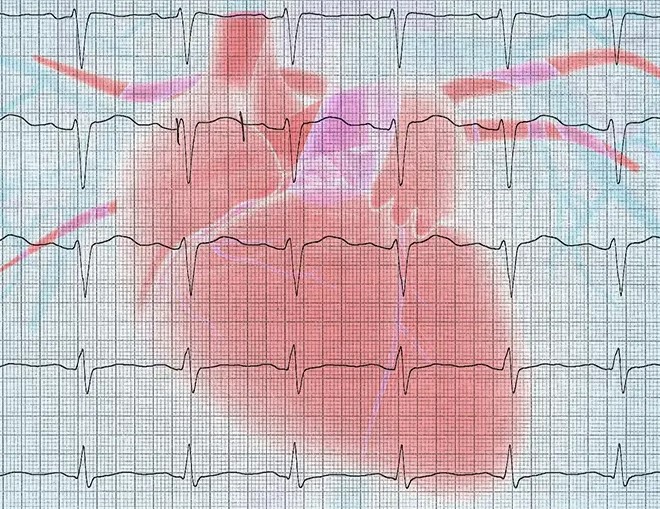
Rare genetic diseases: Long QT Syndrome
Long QT syndrome is a rare genetic disorder that can cause malignant arrhythmias. Treatment is based on the use of beta-blocker drugs
Long QT syndrome is a rare genetic disorder (1 in 2000 individuals in the general population) characterised by a prolongation on the electrocardiogram of an interval called the QT interval (the time in which the heart ‘recharges’ after a contraction) and, therefore, by the possible occurrence of malignant arrhythmias.
Malignant arrhythmias can cause palpitations, syncope and sudden death.
Long QT syndrome is caused by a genetically based alteration of certain proteins involved in the electrical stability of the heart
To date, a total of seventeen genes have been identified that, when altered, can cause the disease.
The various forms found have a progressive numbering and forms 1, 2 and 3 are the ones discovered first because they are the most frequent.
They are also the most studied.
Specific events that trigger life-threatening arrhythmias are known for the three main genetic forms of long QT syndrome:
In patients with type 1 disease, the largest genetic subgroup, most cardiac episodes that can cause death occur during sporting activity;
Patients with type 2 disease are particularly sensitive to emotions and sudden noises, such as the ringing of the telephone or the alarm clock.
In addition, females appear to be at higher risk in the postpartum period;
Patients with type 3 have more frequent episodes during rest or sleep.
In all patients with long QT syndrome, the administration of drugs capable of causing further prolongation of the QT interval, which could lead to the initiation of life-threatening arrhythmias, must be avoided.
Treatment of long QT syndrome is based on therapy with drugs that protect the heart from physical or psychological stress, so-called beta-blockers
In some cases, beta-blockers can be combined with Mexiletine (in type 2 or type 3 forms) and thus prove more effective in preventing the symptoms of the disease.
Sometimes, in some very serious patients, a device such as a pacemaker or cardiac defibrillator is implanted, which help regulate the heartbeat and save lives in the event of cardiac arrest.
Another practice used even before automatic defibrillator implantation is left gangliostelectomy via thoracoscopy (surgery on the nerves that regulate the heartbeat).
Ongoing research will allow the diseased gene to be modified and normalised in the future.
Read Also
Emergency Live Even More…Live: Download The New Free App Of Your Newspaper For IOS And Android
Rare Diseases: Rothmund-Thomson Syndrome
Rare Diseases: Russian Economist Anatoly Chubais Diagnosed With Guillain Barré Syndrome
Ultrarare Diseases: First Guidelines For Malan Syndrome Published
Rare Diseases: Von Hippel-Lindau Syndrome
Zika Linked To Guillain-Barre Syndrome In New Study
Rare Diseases: Septo-Optic Dysplasia
Rare Diseases: Congenital Hyperinsulinism
Foot Deformities: Metatarsus Adductus Or Metatarsus Varus
Progeria: What Is It, Symptoms, Causes, Diagnosis And Possible Treatment
Long QT Syndrome: Causes, Diagnosis, Values, Treatment, Medication
Heart Disease: What Is Cardiomyopathy?
Inflammations Of The Heart: Myocarditis, Infective Endocarditis And Pericarditis
Heart Murmurs: What It Is And When To Be Concerned
Broken Heart Syndrome Is On The Rise: We Know Takotsubo Cardiomyopathy
What Is A Cardioverter? Implantable Defibrillator Overview
‘D’ For Deads, ‘C’ For Cardioversion! – Defibrillation And Fibrillation In Paediatric Patients
Inflammations Of The Heart: What Are The Causes Of Pericarditis?
Do You Have Episodes Of Sudden Tachycardia? You May Suffer From Wolff-Parkinson-White Syndrome (WPW)
Knowing Thrombosis To Intervene On The Blood Clot
Patient Procedures: What Is External Electrical Cardioversion?
Increasing The Workforce Of EMS, Training Laypeople In Using AED
Difference Between Spontaneous, Electrical And Pharmacological Cardioversion
What Is Takotsubo Cardiomyopathy (Broken Heart Syndrome)?
The Patient’s ECG: How To Read An Electrocardiogram In A Simple Way
Stress Exercise Test Inducing Ventricular Arrhythmias In LQT Interval Individuals


